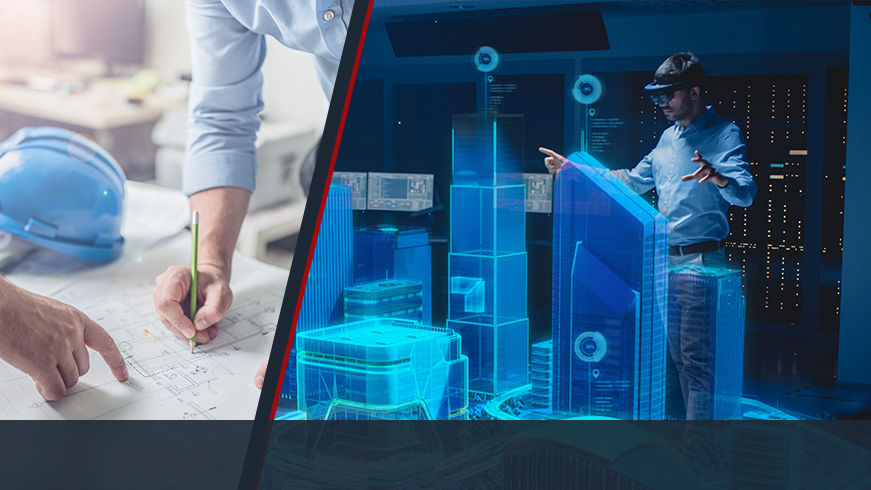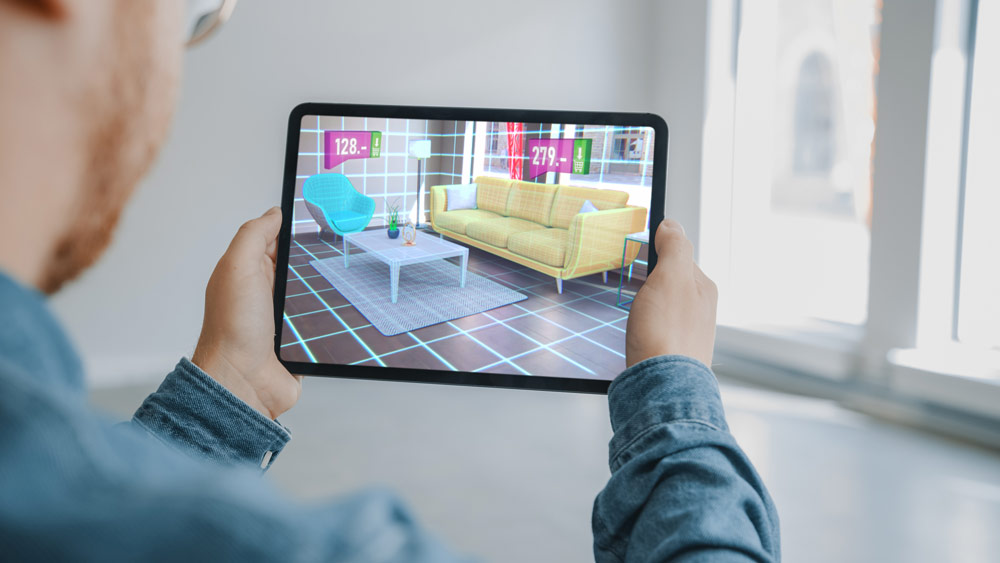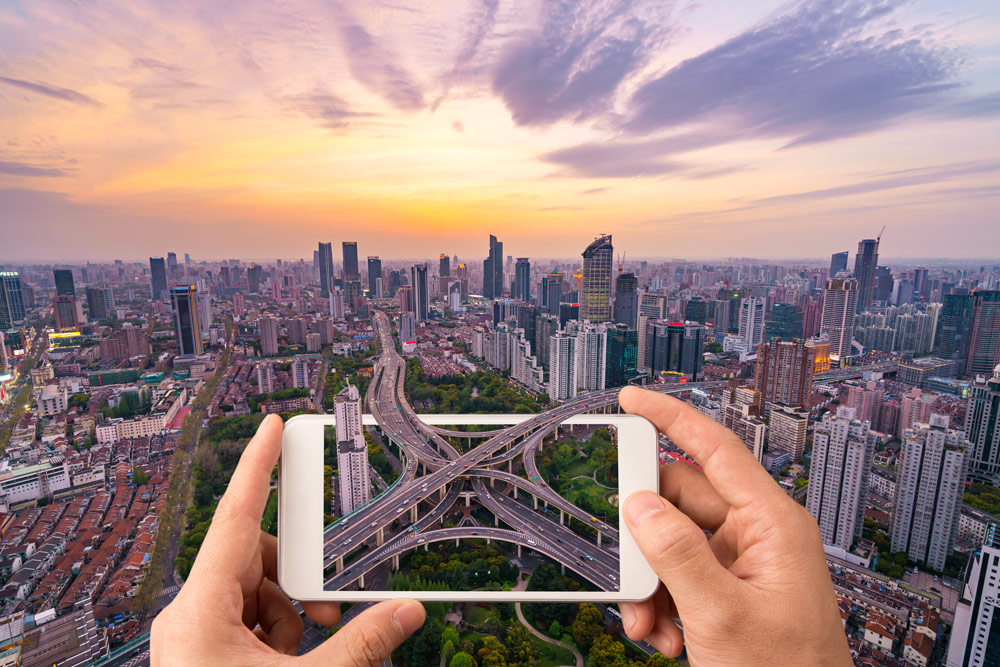Adapting to the latest technological advancements has always been critical to the success of enterprises, both new and established.
The assembly line, telephone, computer, and other similar innovations have all made a massive impact on the way we conduct business, and now it’s time for another shift that could change the way we learn and operate in our day-to-day lives: Immersive Technology.
Pushing the boundaries of how we understand and interact with reality, immersive technology is making its way into many different industries and it’s no wonder why. It provides benefits for companies of all shapes and sizes, including cost savings, improved service, increased productivity, and more.
Below, we discuss dramatic changes immersive technology is poised to make in our world and our businesses, including what it is, how it works, the different kinds, and most importantly – how businesses of all sizes and industries can start to leverage this amazing tech for themselves.
What is Immersive Technology?
Immersive technologies like AR (Augmented Reality) and VR (Virtual Reality) could be described as “imagination brought to life.” The goal is to create experiences that merge digital or simulated realities with the physical world for a 360 degree or “fully immersive” experience. This technology gives users an almost unlimited potential to design and insert their creations into either the real world or an entirely computer-generated one.
Memorable examples of immersive technology in action include everything from the Oculus Quest 2 Headset to the Pokémon GO augmented reality mobile game and even Snapchat filters that layer a cartoon dog’s face over yours.
The Different Types of Immersive Technology
VR, AR, MR, and XR: each type of immersive technology has its own unique spin which makes it well-suited for particular applications and/or audiences.
-
AR (Augmented Reality)
Augmented reality is becoming more and more familiar to us, whether you have fully realized it or not. With AR, digital images are overlaid onto the real world, extending reality. If you’ve ever used Snapchat or Facebook to insert a new face over yours, or a character into the world, you’ve used AR!
The aforementioned Pokémon GO is another example of AR being used in the real world, where the Pokémon characters we know and love are inserted into the real world, getting people up and out to explore the physical world around them.
Recently, stores like Target, Ikea, Amazon, and others have introduced their own AR apps allowing users to digitally insert the products they are considering into their own homes before making a purchase.
-
VR (Virtual Reality) & 360° Immersive Tech
Although sometimes used interchangeably, the terms VR and 360° are two separate yet similar variations on immersive tech.
360° Tech is already fairly commonplace across the internet, used by content creators on platforms such as YouTube and Facebook. Users can explore in any direction just by moving their smartphone 360 degrees around the room as if it were a window to another place or time.
VR tech uses the same idea with a more advanced final product. Through the use of head-mounted displays (HMDs), users are completely shut out from the rest of the world, being fully surrounded by content and a custom-built world full of objects and sounds to interact with as if they were really transported there.
-
MR (Mixed Reality)
Combining the strengths of AR and VR together, mixed reality also uses HMDs. Rather than fully immersing the user in a different world, MR overlays digital images on top of the environment, exactly like AR does.
Many experts and industry leaders are excited about and interested in mixed reality as the true wave of the future.
-
XR (Extended Reality)
Extended reality is an umbrella term used to describe the full range of immersive technologies.
How Can & Do We Use Immersive Tech Today?
Marketing & Advertising
Immersive advertising allows marketers and content creators to leverage an entirely new, and extremely engaging commercial tech. Our mobile phones are already equipped to handle this new method with built-in gyroscopes, magnetometers, and accelerometers.
Immersive advertisements can now respond to devices in motion, creating an interactive experience for consumers that actually has the potential to create and retain engagement with your brand and your business.
Advertisers are also using immersive tech to create promotional experiences for upcoming entertainment and products. For example, Netflix is already using what they call FYSEE 360 technology to bring watchers directly into their most popular worlds!
The result of these efforts? An influx of new users excited to take part in the experiences Netflix provides that we can all share together and a cementing of Netflix as the leader in streaming entertainment.
Ecommerce & Shopping Tools
As previously mentioned, many brands and online stores are introducing their own take on AR apps, allowing users to test out the products they want without ever needing to make a purchase or deal with the reality of shipping, set-up, and returns. This technique is being used by home improvement stores to allow users to try out paint colors in their rooms without ever touching a brush.
The automobile industry is also using this tech, allowing car buyers to look at cars, take virtual test drives, and even sit inside the cockpit without having to visit a physical dealership. In both cases, immersive technology is making shopping experiences more seamless and easier.
Easier, Cost-Effective Exploration
If you’ve moved or scheduled a hotel room recently, you may have experienced VR in action.
Real estate companies and travel agencies are creating fully explorable 360° rendered versions of their listings or available rooms, allowing buyers to visit, explore, and interact with locations without ever having to leave their homes, resulting in an elevated shopping experience, and increased sales.
The same principles are also starting to be applied to fields such as engineering, construction, and even entertainment spaces.
Healthcare & Job Training
Imagine how much better surgeons could be if they could practice their surgeries countless times, under a wide variety of conditions, special circumstances, and more. While this has required a willing patient in the past, AR and VR technology now allows doctors to get this experience much more quickly through simulation.
AR is also being used to help give patients new hope and relieve pain. Students at a Canadian university are developing VR games to immerse patients undergoing chemotherapy treatment into a distracting world, allowing them to experience the world in ways they may otherwise not have gotten to during their treatments.
Driving Immersive Technology Implementation Across The Globe
Immersive technology requires sophisticated and powerful hardware to deliver on its promise of seamless new realities to explore. Lightware Visual Engineering is helping businesses implement immersive technology advancements and programs through UBEX and AV-over-IP solutions, delivering uncompressed audio and video content to help rendered experiences look and feel just a genuine as the real thing.
From new Illuminarium cinematic experiences to networked AV configurations for businesses looking to implement immersive technology in other ways, Lightware has the solutions and expertise to help your dreams of a more efficient and customer-centric business a reality.
Browse our full line of products online today, or contact our team to talk about the right equipment for your needs.






